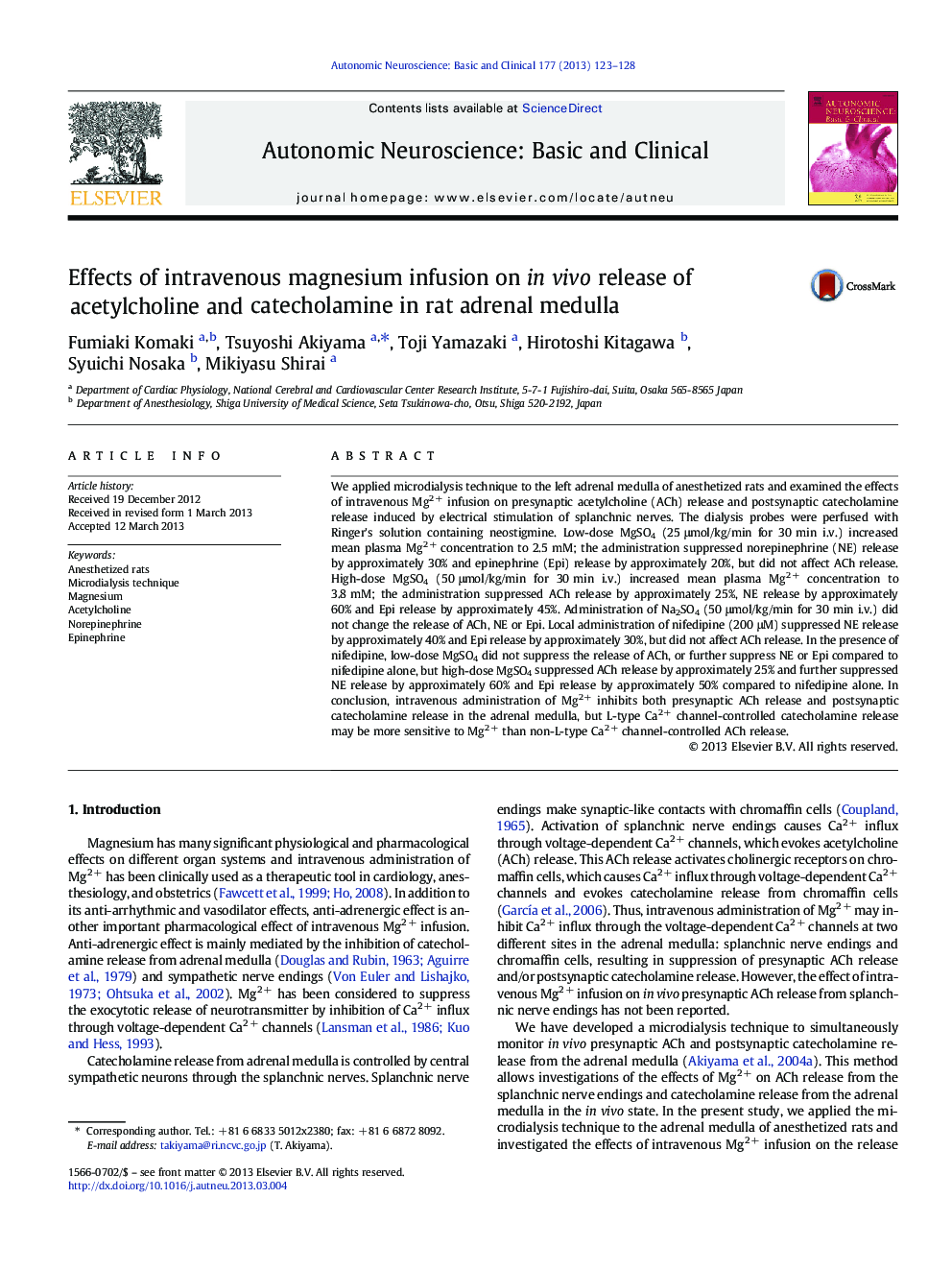| Article ID | Journal | Published Year | Pages | File Type |
|---|---|---|---|---|
| 6004209 | Autonomic Neuroscience | 2013 | 6 Pages |
We applied microdialysis technique to the left adrenal medulla of anesthetized rats and examined the effects of intravenous Mg2 + infusion on presynaptic acetylcholine (ACh) release and postsynaptic catecholamine release induced by electrical stimulation of splanchnic nerves. The dialysis probes were perfused with Ringer's solution containing neostigmine. Low-dose MgSO4 (25 μmol/kg/min for 30 min i.v.) increased mean plasma Mg2 + concentration to 2.5 mM; the administration suppressed norepinephrine (NE) release by approximately 30% and epinephrine (Epi) release by approximately 20%, but did not affect ACh release. High-dose MgSO4 (50 μmol/kg/min for 30 min i.v.) increased mean plasma Mg2 + concentration to 3.8 mM; the administration suppressed ACh release by approximately 25%, NE release by approximately 60% and Epi release by approximately 45%. Administration of Na2SO4 (50 μmol/kg/min for 30 min i.v.) did not change the release of ACh, NE or Epi. Local administration of nifedipine (200 μM) suppressed NE release by approximately 40% and Epi release by approximately 30%, but did not affect ACh release. In the presence of nifedipine, low-dose MgSO4 did not suppress the release of ACh, or further suppress NE or Epi compared to nifedipine alone, but high-dose MgSO4 suppressed ACh release by approximately 25% and further suppressed NE release by approximately 60% and Epi release by approximately 50% compared to nifedipine alone. In conclusion, intravenous administration of Mg2 + inhibits both presynaptic ACh release and postsynaptic catecholamine release in the adrenal medulla, but L-type Ca2 + channel-controlled catecholamine release may be more sensitive to Mg2 + than non-L-type Ca2 + channel-controlled ACh release.
